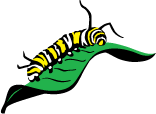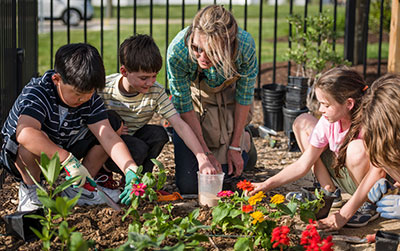Many pollinators around the world and in Maryland are in decline. Pollinators come in all shapes and sizes. Pollination occurs when animals, water, or wind carry pollen from flower to flower or within flowers. Animal pollinators are responsible for pollinating over 80% of the world’s flowering plants.
Gardening for Pollinators Summer 2020.
To View in Full Screen, Please Select the YouTUBE option.
Meet The Pollinators
In Maryland, the most important group of pollinators are bees. Over
400 species of bees can be found in the State as well as over
150 butterfly species. In addition to bees and butterflies, other Maryland pollinators include ants, beetles, flies, moths, wasps, and the ruby-throated hummingbird.
Help Pollinators in Decline
Pollinators need your help! One of the main reasons for pollinator decline is the loss of habitat. Planting native species, providing nesting sites, and avoiding or limiting pesticide use can help increase pollinator diversity and abundance. The
Maryland Wild Acres program focuses on backyard habitat practices that can help a variety of wildlife, including pollinators. Here are a few helpful resources for creating pollinator habitat:
Monarch butterfly by Greg Thompson, USFWS
The Baltimore Checkerspot
The
Baltimore checkerspot is Maryland’s State Insect. Unfortunately, like many pollinators, the Baltimore checkerspot is declining in Maryland. While the exact reasons for this decline are not completely understood, they certainly include habitat loss and degradation, deer browse of the caterpillar host plant (white turtlehead), and succession of open wetlands to forest or dense shrublands. Help Maryland’s State Insect by supporting or volunteering with the
Wildlife and Heritage Service.
Baltimore Checkerspots by Scott Smith (Left) and Pat Durkin (right)
Pollinator Community Science Projects
 Individuals can also help pollinators by contributing data to local and regional community science projects. These projects help scientists learn more about pollinators and benefit their conservation. Below is a list of some projects that assist pollinators:
Individuals can also help pollinators by contributing data to local and regional community science projects. These projects help scientists learn more about pollinators and benefit their conservation. Below is a list of some projects that assist pollinators:
Pollinator Education Resources
One excellent way to help pollinators is to educate others about their importance. Below are some resources for pollinator education:

Pollinator planting by Howard Co Library System, Flickr Creative Commons
Additional Resource
For more information about pollinators, then please visit the following sites:
For more information, please contact:
Maryland Department of Natural Resources
Wildlife and Heritage Service
Tawes State Office Building, E-1
Annapolis MD 21401
410-260-8540
Toll-free in Maryland: 1-877-620-8DNR
[email protected]
Acknowledgements:
- Bee & Butterfly photos by USGS Bee Lab
- Hummingbird by Hart_Curt, Flickr Creative Commons
